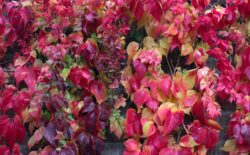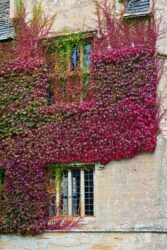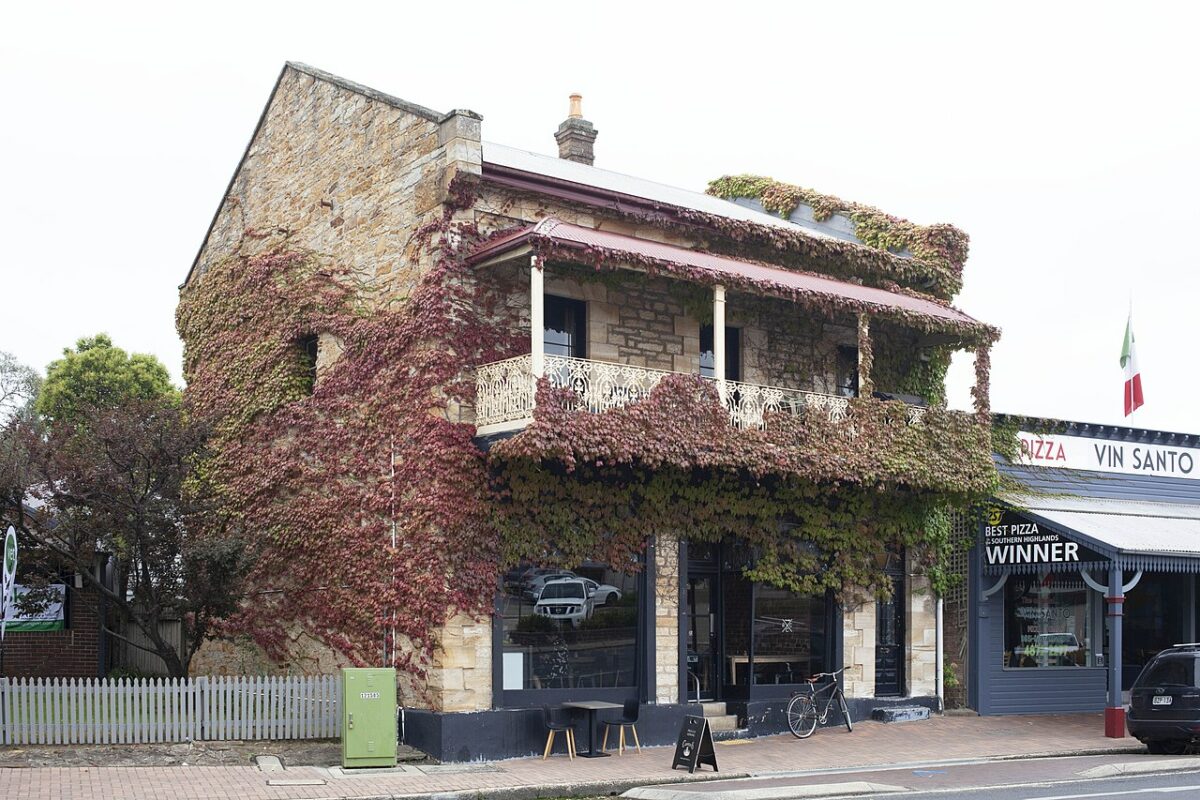In this article, we will be discussing how to grow closely related climbers of Virginia creeper and Boston ivy in containers. Both these plants are very attractive in their own way.

In a previous article, I have talked about ivies, especially the English Ivy, but in this present article, we will talk about other climbers that looks just as colourful and attractive.
VIRGINIA CREEPER
Virginia creeper can be said to be one of the best looking deciduous vines; it has green leaflets that come in 5, creating one whole leaf.
Its Latin name is Parthenocissus quinquefolia, where the second part of its name gives a clue to its nature. Quinque means 5 and folia means leaves, hence it literally translates as 5 leaves. The attractive green leaves that turn a beautiful red in autumn before they drop off leaving a bare skeleton in winter.
Virginia creeper is not easy to grow in containers, especially if you are not prepared to make the effort but it is possible if you are prepared to pay extra attention to its growing needs. The most impressive feature of Virginia creeper is that it can cover the surfaces of houses or large walls with its attractive green leaves.
For a large vine that can grow up to 10m in height, but spread very widely, it is pretty lightweight, where you do not have to worry about the vine causing damage to support structures.
THE VINES ARE SEE-THROUGH
One thing that also makes it attractive is that the vines are see-through so that you can still see the wall behind the vines since the grown is rather open. The vine needs no assistance to grow, the tendrils it produces can cling to bricks, stones, walls, fences or metal structures.

The tendrils have suckers at the end that easily attaches to any structure you offer to the plant.
If you do not want to grow up a structure, you can grow along the ground as it makes good ground cover but this is not advised if you want to grow in containers and you do not want a rampant plant in the garden.
It is grown, as said previously for its leaves, the colour they change in autumn and for the blackberries that are produced that help the local bird wildlife.
BOSTON IVY
Another Parthenocissus that is worth growing is P. triscuspidata, the Boston ivy. It is also an attractive climbing vine that you often see covering the walls of some buildings. The name Ivy League was named because of this plant, as it was found growing by the side of many of the top university buildings in the United States of America.
It has an alternative name of Japanese ivy and is even more vigorous than its Virginia Creeper cousin.
It can overtake any garden that it is growing in, so do be careful when planting it.

Like Virginia creeper, it grows and climbs up via tendrils that can cling to walls and other support structures.
The glossy leaves of the plant are very attractive but instead of being divided into leaflets, the leaves have three-lobes. Like Virgin creeper in autumn, the leaves turn a fiery red, giving plenty of colours where colour is often needed at a bleak time of year.
Varieties to grow is ‘Veitchii’ that has smaller, more purple leaves but still as vigorous and ‘Spring Green’ that has glossy green leaves that turn a vivid red in autumn. The most colourful variety to give an autumn display.
Both Virginia creeper and Boston ivy are lovely ornamental vines that are very hardy. Often the Boston ivy makes a dense canopy of leaves compared to the Virginia creeper. Both are also easy to grow.
GROWING VIRGINIA CREEPER AND BOSTON IVY IN CONTAINERS
An advantage of growing these climbers in containers is that the plant will not be as vigorous, lush or attractive that you hope for. Some will see this as a blessing, whilst others will see it as an opportunity not worth the effort. If you use too small a pot, the root of these climbers can freeze quicker and therefore much more likely to damage the roots.
If you are growing Virginia creeper or Boston ivy, you will need a container as large as possible- A wide half-barrel will be ideal.
Fill the large container with plenty of drainage holes with multipurpose compost and make a hole in the centre the size of the root ball. Tip the plant out of the container and then place it in the planting hole you created. Firm the plant in, making sure it is placed at the same level it came in the original container you bought the plant in, no swallower or deeper. Water well and continue to do so until the plant is established.
THEY WILL DRY OUT QUICKLY
Virginia creeper and Boston ivy will dry out quicker than if it is planted directly in the ground. This means in hot weather the plant will need to be watered frequently. So, if you go on vacation or away for a length of time, you will need to use an irrigation system or you will have to rely on your friends or neighbours to help.
The plants ideally like to be grown in full sun, which will show off their autumn colours. Although, it can take a little, light shade. You can plant them either in spring or autumn, as it does not matter.
Be aware, although the plants are beautiful that any building it clings too can be damaged but the vines. Think carefully before purchasing these plants if you want a home that will not be damaged on the surface.
As the plants tend to be vigorous, you may need to prune them to keep them in shape and the area that you wish to cover and no more. Otherwise, you will have a rampant plant on your hands. Only feed very occasionally and only if the plant is showing signs of having any form of deficiency, as you do not want to add to it vigorous growth.
CONCLUSIONS
In this article, we have discussed how to grow Virginia creeper or Boston ivy in containers. Both are very vigorous climbers that can easily cover a wall if they are not kept in check. Ivies are easy to grow, need little looking after. They may need extra watering but they are well worth the effort in growing them, especially if you want to have plenty of reds in your garden in autumn.
They are both hardy and can take a lot of punishment, so well worth the effort.
If you have any questions and comments that you wish to make, please do so in the comment box below.
Happy climber growing.


Thanks so much for sharing great information that will help many who are looking to know more about how to grow Virginia creeper and Boston Ivy in containers, I’ve seen the Virginia creeper often in the area where I live, I must say it grows wild and you can only see it on a house very seldom, I guess it’s because many people think that is a poison plant, at least my husband is allergic to it, so we avoid to have it in our yard, that sad me as you mention on your post it changes colors during Fall and it makes it to look very nice, I don’t see any Boston Ivy in our area, I was wondering if it can grow good on cold weather, if it does I might give it a try.
Hi Alejandra
I think both plants are wonderful covering walls and houses and as I say it is up to you to decide which one to ho for. For a couple weeks in autumn the redness is stunning like a fire amongst the bushes. They are both easy plants.
Thanks
Antonio
Another great post!
I like the house in that picture, it really looks gorgeous. Sorry, if I sound out of the topic, but how long does it take for the Virginia creeper or the Boston Ivy to cover a house like that?
After reading your post, I think the Boston Ivy is the best one for me. Because I want a plant that needs less effort and that is so beautiful.
Thanks for sharing!
Hi Adyns
If you are looking for plsbtd that can cover your homes and add beauty is spring to autumn then you cannot go wrong with these two. To answer your question it will take years, maybe decades to get that big bit it does make an instant impact statement. They are both colourful and are great in containers, as they will not get that big.
Thanks
Antonio